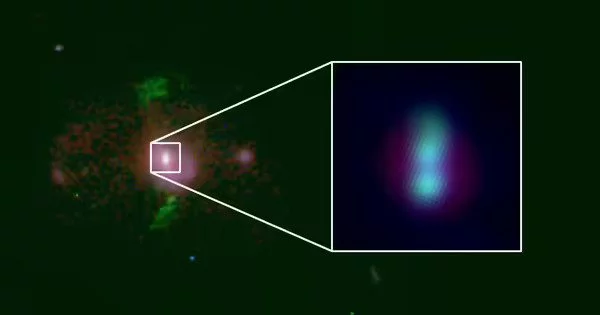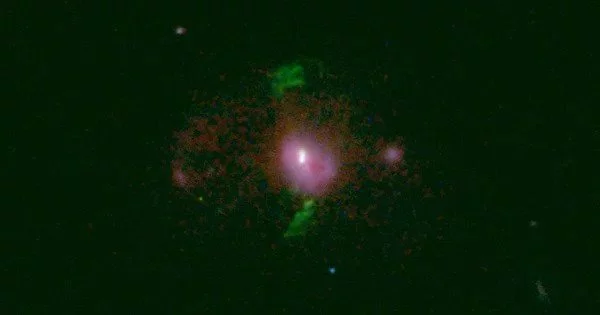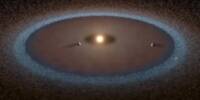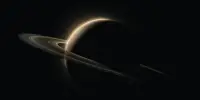Most, if not all, massive galaxies, including our own Milky Way, are thought to contain supermassive black holes. These black holes are enormous, with masses millions or even billions of times that of our Sun. They are thought to form and grow through accretion, where they gather mass from their surroundings, and mergers with other black holes.
Astronomers discovered that supermassive black holes that are obscured by dust are more likely to grow and release massive amounts of energy when they are inside galaxies that are expected to collide with another galaxy. Newcastle University researchers led the new study, which was published in Monthly Notices of the Royal Astronomical Society.
Supermassive black holes are found at the centers of galaxies, including our own Milky Way. They have masses that are millions, if not billions, of times that of our Sun. These black holes expand by ‘eating’ the gas that falls on them. What drives the gas close enough to the black holes for this to happen, however, remains a mystery.
When galaxies are close enough together, they may be gravitationally pulled towards each other and’merge’ into a single larger galaxy.
Our novel approach looks at hundreds of thousands of distant galaxies with a statistical approach and asks how likely any two galaxies are to be close together and thus on a collision course.
Sean Dougherty
In the final stages of its journey into a black hole, gas lights up and produces a huge amount of energy. This energy is typically detected using visible light or X-rays. However, the astronomers conducting this study were only able to detect the growing black holes using infrared light. The team made use of data from many different telescopes, including the Hubble Space Telescope and infrared Spitzer Space Telescope.
The researchers devised a new method for determining the likelihood that two galaxies are very close together and will collide in the future. They used this new method to study hundreds of thousands of galaxies in the distant universe (galaxies formed 2 to 6 billion years after the Big Bang) in order to better understand the so-called “cosmic noon,” a time when most of the Universe’s galaxy and black hole growth is expected to have occurred.
Understanding how black holes grew during this time is fundamental in modern day galactic research, especially as it may give us an insight into the supermassive black hole situated inside the Milky Way, and how our galaxy evolved over time.

Because they are so far away, only a small number of cosmic noon galaxies meet the criteria for precise distance measurements. This makes determining the proximity of two galaxies with high precision extremely difficult.
This study presents a new statistical method for measuring accurate distances between galaxies and supermassive black holes at cosmic noon that overcomes previous limitations. It uses a statistical approach to calculate galaxy distances using images at various wavelengths, eliminating the need for spectroscopic distance measurements for individual galaxies.
Data arriving from the James Webb Space Telescope over the coming years is expected to revolutionise studies in the infrared and reveal even more secrets about how these dusty black holes grow.
“Our novel approach looks at hundreds of thousands of distant galaxies with a statistical approach and asks how likely any two galaxies are to be close together and thus on a collision course,” says Sean Dougherty, postgraduate student at Newcastle University and lead author of the paper.
“These supermassive black holes are very difficult to find because the X-ray light, which astronomers have traditionally used to find these growing black holes, is blocked and not detected by our telescopes,” says Dr Chris Harrison, co-author of the study. These same black holes, however, can be discovered using infrared light, which is produced by the hot dust that surrounds them.”
“The difficulty in finding these black holes and establishing precise distance measurements explains why this result has previously been difficult to pin down these distant ‘cosmic noon’ galaxies,” he adds. We expect JWST to discover many more of these hidden growing black holes. JWST will be far better at finding them, so we will have many more to study, including the most difficult to locate. From there, we can learn more about the dust that surrounds them and determine how many are hidden in distant galaxies.”
















